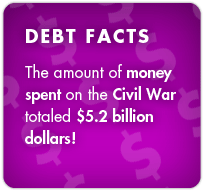
History of Treasury Securities
The U.S. has used debt to help pay for the services it provides since the country was founded. Most of the Treasury securities the Government still offers today, such as bills, notes and Treasury bonds, were created in the 1920s. The money raised by selling these securities helped pay for our country’s part in World War I.
United States Savings Bonds were first sold in 1935 and helped to cover the cost of programs aiding people during the Great Depression, and later, the cost of World War II. Before savings bonds were created, there were other types of bonds. One type was called the Liberty Bond. These bonds were sold during World War I to finance the war. United States Savings Bonds were designed so you get paid interest on a regular basis. You can also cash them in a short time after buying them and still get back what you paid for them.
Many people buy savings bonds to save for retirement and other goals such as education by having money for savings bonds deducted from their paycheck. This is called payroll savings. Payroll savings changed from paper savings bonds purchases to electronic purchases through TreasuryDirect in 2010. Paper savings bonds are no longer available through payroll savings or from financial institutions. They can be bought with tax refunds using a special Form 8888.
With savings bonds, you will get back what you paid for the bond plus interest from the U.S. Government, so there is very little risk. People also invest their money in other types of plans that include both stocks and other types of bonds. These plans have more risk since you could make money, or lose money, depending on what happens with the economy and in the stock market.
- 1920's - Most Treasury Securities are created to help pay for WWI.
- 1935 - Sales of the first U.S. Savings Bonds occurred in 1935 to cover the cost of programs aiding people during the Depression.








